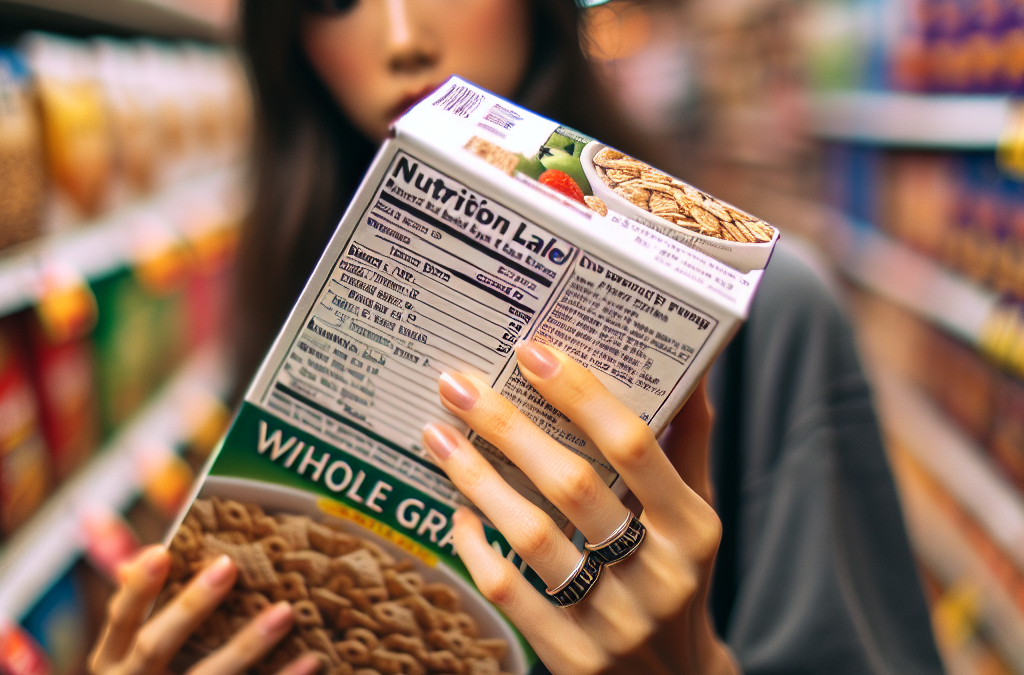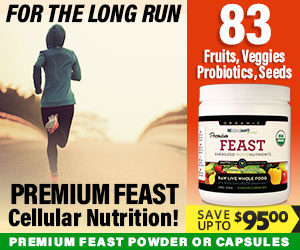Understanding Serving Sizes
What Exactly is a Serving Size?
When I first started looking at nutrition labels, I was shocked at how often I misjudged serving sizes. It’s not just about the number of calories or fat; it’s really about what one serving means for your overall intake. For example, a bag of chips might seem innocuous until you realize that the serving size listed is only a handful. Suddenly, you’re munching through ‘two servings’ without even batting an eye!
Serving sizes are there to help guide us on moderation. Each food item has a standardized unit of measure, whether it be a cup, a piece, or a slice. If you aren’t aware of what a single serving is, you could be consuming way more than you intend, which can wreck your health goals!
It’s useful to take a minute and visualize what a serving size looks like. For example, when you scoop ice cream, remember to respect the ½ cup serving. Trust me, learning what a proper serving looks like makes a difference in your eating habits.
The Importance of Serving Sizes
Understanding serving sizes plays a critical role in how we track our food intake. It’s not just about calories but also understanding how nutrients add up. Remember that too much of a good thing can also lead to problems, right? By sticking to proper serving sizes, you’re far more likely to maintain a balanced diet and not overindulge without even realizing it.
Also, the more you get used to these sizes, the easier it becomes to make healthier swaps. You might start cooking at home more often when you clearly see how many servings are in a frozen meal that sounds super convenient but isn’t really what you want to be eating every day.
Plus, by focusing on serving sizes, you’re less likely to waste food. You’ll know exactly how much you need to prepare rather than guessing and ending up with leftovers that get tossed out later. It’s a win-win!
Comparing Serving Sizes Across Brands
Another personal tip is to take time to compare serving sizes across different brands. I’ve found that some brands will list a much smaller serving size just to make calories look lower. For instance, I once bought a ‘healthy’ granola, only to find out that I needed to eat twice as much to get a decent amount of nutrients compared to another brand!
This sort of comparison helps inform better choices while grocery shopping. By paying attention to serving sizes, you can also learn more about which foods pack the most nutritional punch per serving. Finding the right balance isn’t just smart; it saves cash in the long run.
Becomes a habit to check these details—your body (and wallet) will thank you as you master how to read the fine print on food labels!
Deciphering Nutritional Information
Nutritional Facts Section Breakdown
When I dive into the nutrition facts section, it often feels like trying to decode hieroglyphics! These labels give you the lowdown on calories, fats, proteins, and carbs, but you gotta know what each term means. Each element tells a story about what you’re actually putting into your body.
For example, understanding the difference between total fat and saturated fat is crucial. While healthy fats are essential, consuming too much saturated fat may lead to health concerns down the line. But in the thick of munching, realizing this can feel like trying to navigate a maze!
Finding out what these figures really say about your food can empower you. Rather than just shoving snacks into my face, I now think about the ingredients and their benefits or drawbacks.
Key Nutrients to Watch For
One thing I learned is to pay attention to key nutrients—like fiber, protein, sugars, and carbs. Fiber is particularly important if you’re trying to regulate digestion and feel fuller longer. I remember really getting into whole grains and realizing how beneficial they are because they have so much more fiber than white bread.
Equally, when it comes to sugars, I’ve learned to be cautious. Many products, even those marketed as healthy, are sneakily high in sugar. Once I began checking labels, it became a game to find my favorite snacks that aren’t loaded with excess sugar while still being tasty.
This kind of awareness means I make better choices. If I’m reaching for a snack, I now glance at those key nutrients and ask myself, ‘Is this nourishing me or just empty calories?’ It definitely turns munching into a mindful experience!
Daily Values Explained
Now, let’s get real about daily values (DV). This number shows you how much a nutrient in a serving contributes to a daily diet, based on a 2,000-calorie intake. It can be both enlightening and confusing, but trust me, it’s worth figuring out.
These values guide us—like a compass on our journey to healthy eating. For instance, if you see a food item that provides 20% of your daily value for fiber, you know you’re making a solid choice. For the record, I aim for items that are 20% or more of key nutrients.
Becoming familiar with DVs means you’re actively participating in your own well-being. You’re no longer a passive consumer; you’re engaging with what goes inside you. It’s an important step toward building healthier habits and choices!
Ingredient Lists Demystified
Reading Ingredients from Top to Bottom
Diving into the ingredient list can feel like peeking behind the curtain. Ingredients are listed in descending order by weight, meaning the first few components are the bulk of what you’re eating. The first ingredient can reveal a lot about whether the food is nutritious or just a glorified snack.
When I started reading these lists, I was stunned at how many items I thought were healthy had a ton of additives. You know, those ‘-ose’ words can be sneaky little sugar variations that aren’t super friendly to our bodies! Pay attention, and you’ll spot them in no time.
I often choose snacks where the first ingredient is something like ‘whole grain’ or ‘nuts’ instead of ‘sugar’ or ‘corn syrup’. It feels good to know I’m making smarter choices for myself!
Short Lists vs. Long Lists
I’ve noticed that shorter ingredient lists usually indicate a more food-like product. If you can recognize most of the items on the list, it’s likely a better option compared to a long list with unpronounceable substances. For example, a simple trail mix of nuts and dried fruit is far preferable to a granola bar packed with artificial flavors!
A quick trip through the grocery store has turned into a brief chemistry lesson. I often find myself standing in the aisles evaluating what to buy—almost like a nutrition detective!
Once I understood the significance of the ingredient list, healthy eating transformed from a chore to something that felt more proactive. It’s empowering knowing what’s actually going into your meals.
Spotting Allergens
One of the more critical parts of ingredient lists is spotting allergens. Foods are often packaged with a small disclaimer regarding common allergens. For people with food sensitivities, knowing this is vital!
Get an Amazing Discount on the Best Certified Organic Whole Food Supplement!
I remember a friend who was gluten intolerant and constantly had to double-check labels. Even snacks that seem gluten-free can be cross-contaminated with gluten during processing. It’s crucial to read every label, especially when you have specific dietary needs.
By familiarizing yourself with potential allergens, you’re taking another step towards better health. You’re also gaining confidence in making choices that cater to your needs and avoiding unwanted surprises on your plate!
Understanding Claims on Labels
Sorting Through Health Claims
Pick up any packaged food and you’ll see buzzwords claiming it’s ‘organic,’ ‘natural,’ or ‘low-fat.’ But here’s the kicker: these terms aren’t all created equal. Some might have extensive regulations, while others are just marketing gimmicks!
I learned that ‘organic’ means the food is free of synthetic fertilizers and pesticides, which is awesome. But then you have ‘natural’ which—believe it or not—doesn’t have a strict legal definition. This little nuance can make a huge difference in what you’re actually eating.
Understanding these claims has made me a more informed shopper. I shifted my focus from getting drawn in by appealing labels to truly examining ingredients to back up each claim!
The Role of Certifications
Another thing to watch for is certifications like USDA Organic, Non-GMO Project Verified, or gluten-free labels. These certifications often give a little extra assurance of quality and transparency. It’s not just smoke and mirrors; this helps me trust that what I’m packing in my grocery bags is above board.
But just because it has a nice sticker doesn’t mean it’s automatically healthy. I can’t tell you how many times I’ve seen ‘gluten-free’ snacks that are still full of sugar or empty carbs! There’s a fine line between feeling good about a label and ignoring what’s in the actual food.
So, I always try to combine these claims and certifications with reading nutrition facts. This thorough check helps me make choices that align more with my health goals.
Marketing Tricks to Avoid
Lastly, be on the lookout for marketing tricks. Phrases like ‘lightly sweetened’ may sound healthful, but they often just indicate that the sugar content isn’t as high as similar products. You may still be consuming a considerable amount of sugar when you add up your servings.
Another favorite of mine is the ‘heart-healthy’ claim. It can be misleading based on context. Just remember, you can’t merely trust the front of a box; the true story is on the back. So, take that extra time to flip the package and double-check!
Dissecting these marketing tactics has helped me feel savvy about what I’m putting in my body. Shopping became less overwhelming and more enjoyable when I could spot what was genuine vs. what was merely clever advertising.
Putting It All Together
Building Healthy Habits
After digging into all these elements of nutrition labels, one thing became very clear—it’s about building healthy habits over time. I know that consistency is key, and learning what to look for in labels transformed my shopping trips into informed adventures.
Each time I hit the grocery store, I feel like I’m collecting tools to add to my healthy living toolbox. I’m not making drastic changes overnight but slowly integrating better choices one at a time.
Eventually, you’ll find the foods that work for your diet while feeling empowered by your decisions. It’s totally about making changes that work for you, your body, and your lifestyle!
Meal Prep and Label Learning
Once I felt more comfortable with labels, meal prepping became a game changer for me. I started buying groceries with intention, and I was actually cooking meals instead of reaching for processed options. Knowing what choices are healthy means planning becomes fun!
Through meal prepping, I began embracing cooking as an opportunity to use that knowledge. I found myself putting together nutritious meals that I felt proud of, not just hastily eating whatever was easy. Each labeled food choice added personality to my meals, allowing me to experiment.
Meal prepping along with understanding food labels really taught me about portion sizes, nutrition, and how to feel satisfied without the guilt. It’s honestly been liberating!
Staying Informed with Continuous Learning
Lastly, I’ve learned that nutrition is always evolving, and so should our understanding. What I thought I knew when I started reading these labels has significantly changed, and that’s totally okay! Staying open to new information and adapting my habits accordingly is now part of my lifestyle.
There are tons of resources out there – blogs, podcasts, even social media accounts dedicated to nutrition education. Engaging in these communities helps me stay informed while bringing a fun twist to learning!
Making sense of nutrition labels isn’t just a fad; it’s a lifelong journey. So, come along on this ride with me — let’s keep our health at the forefront and learn something new every day!
FAQs
1. Why should I pay attention to serving sizes?
Serving sizes are crucial because they guide how much you’re really consuming. If you don’t know what a serving size looks like, you could easily overeat, which can throw off your health goals.
2. How can I better understand nutritional information?
Start by breaking down the nutrition facts section. Focus on key nutrients like calories, fats, proteins, and sugars, and how they contribute to your daily diet. This will empower you to make more informed choices.
3. What does the ingredient list tell me?
The ingredient list shows what’s in the food you’re consuming, listed by weight. The first ingredients listed will make up the bulk of the product. This helps you understand if what you’re eating is nutritious or merely filled with fillers.
4. Are health claims on labels reliable?
Not always! Health claims can be misleading, so it’s essential to look beyond the marketing hype. Always read the actual ingredient list to know what you’re really consuming.
5. How can I incorporate this knowledge into my daily life?
Start by reading labels when you shop and applying what you’ve learned over time. Consider meal prep as a fun way to engage with your dietary choices, and remember that learning is a continuous journey!




